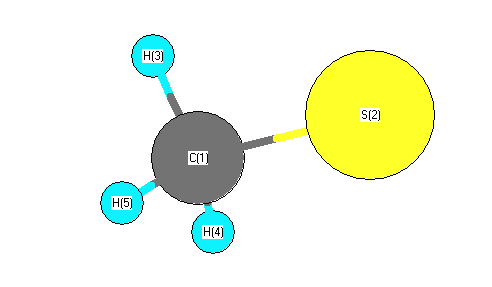.
| squib |
reference |
DOI |
| 1986End/Sai:1770 |
Endo, Saito, Hirota, The microwave spectrum of the thiomethoxy radical CH3S, J. Chem. Phys., Vol. 85, # 4, pgs. 1770-1777 |
10.1063/1.451178 |
| 1989Hsu/Liu:6852 |
Hsu, Y.C.; Liu, X.; Miller, T. "Rotational analysis of … electronic transition of the jet cooled methylthio radical." Journal of Chemical Physics. 90, 6852-6857 (1989) |
10.1063/1.456258 |
| 1999BIS/CHO805 |
Bise RT, Choi H, Pedersen HB, Mordaunt DH, Neumark DM, Photodissociation spectroscopy and dynamics of the methylthio radical (CH3S),J. CHEM. PHYS. 110: (2) 805-816 JAN 8 1999 |
10.1063/1.478048 |
| 2002Rie/Tsc:231 |
JC Rienstra-Kiracofe, GS Tschumper, HF Schaefer III, S Nandi, GB Ellison "Atomic and Molecular Electron Affinities: Photoelectron Experiments and Theoretical Computations" Chemical Reviews 2002, 102, 231-282 |
10.1021/cr990044u |
| VEELB |
M.E. Jacox,"Vibrational and Electronic Energy Levels of Polyatomic Transient Molecules. Supplement B" J. Phys. Chem. Ref. Data, Vol. 32, No. 1, 2003,1-441 |
10.1063/1.1497629 |
| webbook |
NIST Chemistry Webbook (http://webbook.nist.gov/chemistry) |
10.18434/T4D303 |










